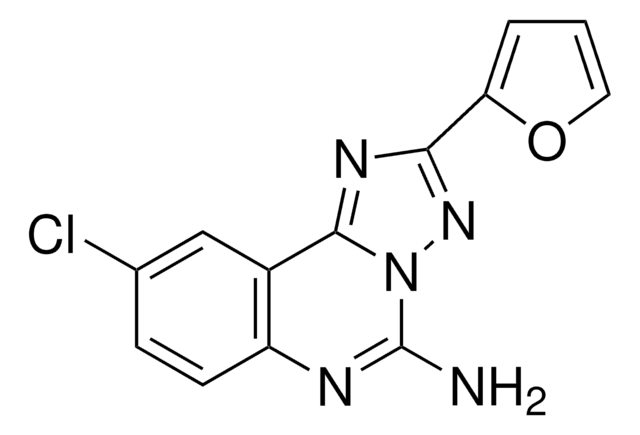D8783
7-Deaza-2′-deoxyguanosine 5′-triphosphate lithium salt
10 mM in H2O
Synonym(s):
−N7-dGTP, 7-Deaza-dGTP
About This Item
Recommended Products
biological source
Porcine muscle
rabbit muscle
Assay
≥95% (HPLC)
form
liquid
concentration
10 mM in H2O
color
colorless
shipped in
dry ice
storage temp.
−20°C
SMILES string
NC1=NC(=O)c2ccn(C3CC(O)C(COP(O)(=O)OP(O)(=O)OP(O)(O)=O)O3)c2N1
InChI
1S/C11H17N4O13P3/c12-11-13-9-5(10(17)14-11)1-2-15(9)8-3-6(16)7(26-8)4-25-30(21,22)28-31(23,24)27-29(18,19)20/h1-2,6-8,16H,3-4H2,(H,21,22)(H,23,24)(H2,18,19,20)(H3,12,13,14,17)
InChI key
DLLXAZJTLIUPAI-UHFFFAOYSA-N
Looking for similar products? Visit Product Comparison Guide
Related Categories
Application
Biochem/physiol Actions
Storage Class Code
10 - Combustible liquids
WGK
WGK 2
Flash Point(F)
Not applicable
Flash Point(C)
Not applicable
Certificates of Analysis (COA)
Search for Certificates of Analysis (COA) by entering the products Lot/Batch Number. Lot and Batch Numbers can be found on a product’s label following the words ‘Lot’ or ‘Batch’.
Already Own This Product?
Find documentation for the products that you have recently purchased in the Document Library.
Customers Also Viewed
Our team of scientists has experience in all areas of research including Life Science, Material Science, Chemical Synthesis, Chromatography, Analytical and many others.
Contact Technical Service








